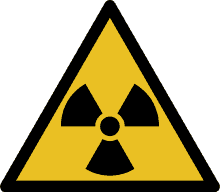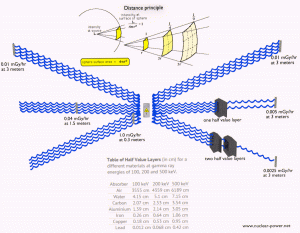
Radiation protection is the science and practice of protecting people and the environment from the harmful effects of ionizing radiation. The International Atomic Energy Agency (IAEA) defines radiation protection as:
“The protection of people from harmful effects of exposure to ionizing radiation, and the means for achieving this”
It is a serious topic not only in nuclear power plants but also in industry or medical centers. According to the IAEA, radiation protection can be divided into three groups:
- occupational radiation protection, which is the protection of workers in situations where their exposure is directly related to or required by their work
- medical radiation protection, which is the protection of patients exposed to radiation as part of their diagnosis or treatment
- public radiation protection, which is the protection of individual members of the public and the population in general
According to the ICRP (Publication 103), the System of Radiological Protection is based on the following three principles:
- Justification. “Any decision that alters the radiation exposure situation should do more good than harm.”
- Optimization of Protection. “Doses should all be kept as low as reasonably achievable, taking into account economic and societal factors.” (known as ALARA or ALARP)
- Dose Limitation. “The total dose to any individual … should not exceed the appropriate limits.”
See also: ICRP, 2007. The 2007 Recommendations of the International Commission on Radiological Protection. ICRP Publication 103. Ann. ICRP 37 (2-4).
Radiation Protection Principles – Time – Distance – Shielding
External exposure is radiation that comes from outside our body and interacts with us. In this case, we analyze exposure predominantly from gamma rays since alpha and beta particles generally constitute no external exposure hazard because the particles generally do not pass through the skin. For example, the radiation source can be a piece of equipment that produces the radiation, like a container with radioactive materials or an x-ray machine. In radiation protection, there are three ways how to protect people from identified external radiation sources:
-

Principles of Radiation Protection – Time, Distance, Shielding Limiting Time. The amount of radiation exposure depends directly (linearly) on the time people spend near the radiation source, and the dose can be reduced by limiting exposure time.
- Distance. The amount of radiation exposure depends on the distance from the radiation source. Similar to heat from a fire, if you are too close, the intensity of heat radiation is high, and you can get burned. If you are at the right distance, you can withstand it without any problems, and it is comfortable. If you are too far from a heat source, the insufficiency of heat can also hurt you. In a certain sense, this analogy can be applied to radiation also from radiation sources.
- Shielding. Finally, shielding must be used if the source is too intensive and time or distance does not provide sufficient radiation protection. Radiation shielding usually consists of barriers of lead, concrete, or water. There are many, many materials, which can be used for radiation shielding, but there are many, many situations in radiation protection. It highly depends on the type of radiation to be shielded, its energy, and many other parameters. For example, even depleted uranium can be used as good protection from gamma radiation, but on the other hand, uranium is inappropriate shielding from neutron radiation.